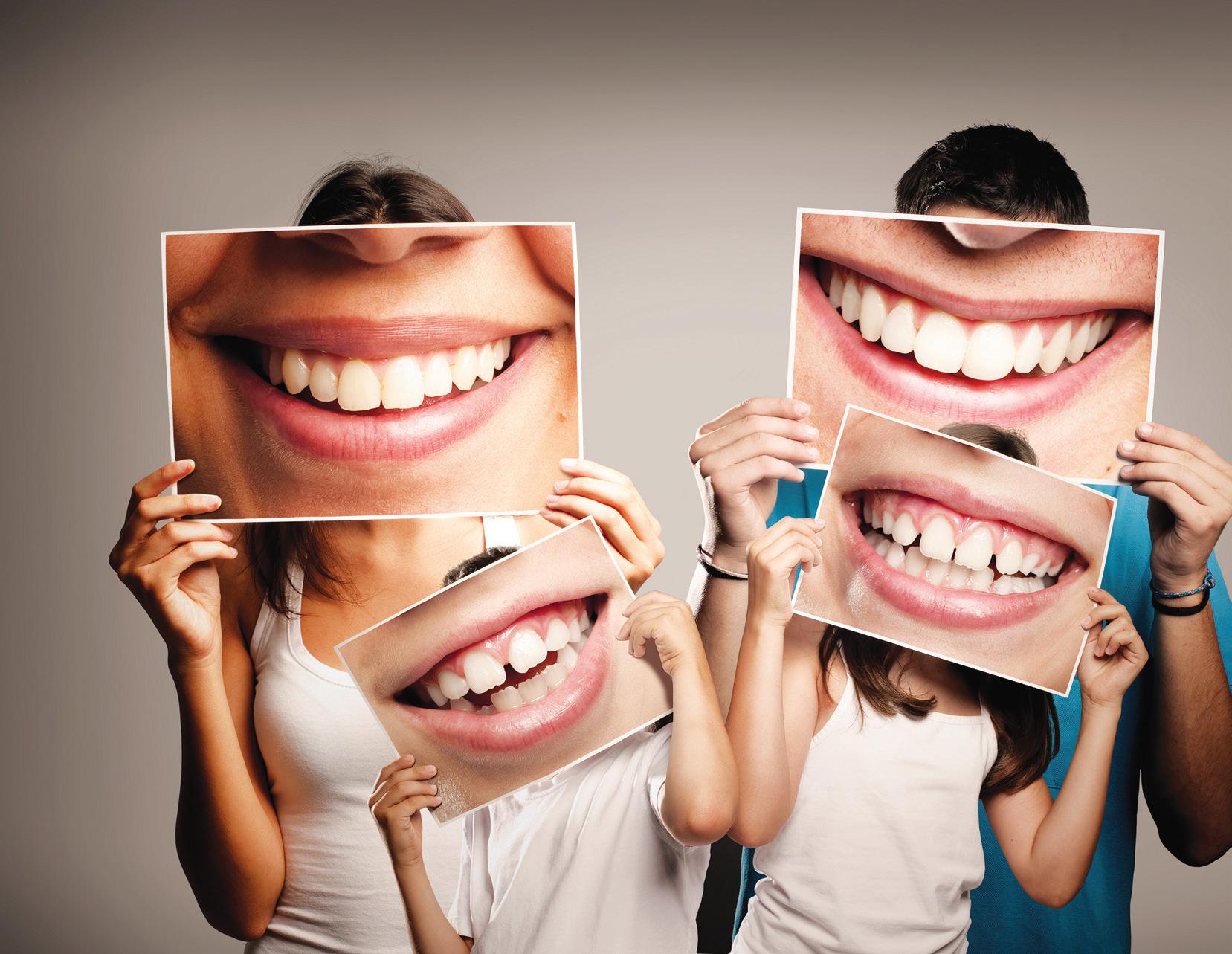
9 minute read
HELP CHILDREN RELEASE
Help Children Release Trapped Emotions for a Healthier, Happier Mindset
by Jennifer Burrows
Advertisement
The impact that emotions have on our physiology is well documented in scientific literature. We commonly refer to emotions as either being positive or negative. In reality, each emotion serves a valuable role. Emotions such as excitement, joy, anger—and even grief— help us participate in the world we live in, adding elements of texture and depth to our experiences. Anger, for example, can spur us into action in the face of injustice.
When paid attention to, our emotions can be powerful guides in our day-to-day lives. They can help us make decisions, set boundaries, and even tell us that we need to take some time to take care of ourselves. Every emotion serves as a unique brushstroke on the canvas of life. Some emotions are better categorized as renewing, such as love, joy and gratitude, while emotions such as shame, anger and fear, when prolonged and unprocessed, can become depleting and lead to a host of physiological and emotional concerns.
Neuroscientist Dr. Candace Pert, author of Molecules of Emotion, states, “We can no longer think of the emotions as having less validity than physical, material substance, but instead must see them as cellular signals that are involved in the process of translating information into physical reality, literally transforming them into matter. Emotions are at the nexus between matter and mind, going back and forth between the two and influencing both.”
The year 2020 has brought much grief, uncertainty and fear for many. This is especially true for children. They have been thrust into a very unfamiliar and scary new world while, more often than not, absorbing the emotions and anxieties of their parents as well as collective emotions that humanity is experiencing on a worldwide scale. If you are a parent, you may be seeing changes in moods, behaviors and sleep patterns. We tend to think of stress primarily affecting adults, but children are also quite vulnerable.
While we may be powerless to change our current world situation, there is much we can do to release trapped emotions, thus shifting the emotional landscape of the body and contributing to a more resilient state. Emotion Code, created by Dr. Bradley Nelson, has been used successfully for the past 20 years by many people all over the world to identify and release trapped emotions. It is a gentle yet powerful technique. Children especially respond very quickly to Emotion Code, and really enjoy being part of the process.
By the time we are adults, we often have endured years of emotional stress only to find ourselves in a state of exhaustion and depletion. As Dr. Candace Pert said, “Since emotions run every system in the body, don’t underestimate their power to treat and heal.” Imagine if we’d had tools such as the Emotion Code available to us when we were children. Where would we be now?
Childhood is a perfect time to start this sort of support—especially now.
Jennifer Burrows, CBS, CSMS, LSHC, is a certified Emotion Code practitioner and owner of Mind-Body Wellness, located at 319 W. Hastings, Ste. A112, in Spokane. Burrows is currently offering new clients a free 30-minute consultation, as well as three, one-hour sessions for individuals or families for only $195. Call 509-242-0856 to schedule or visit SpokaneBiofeedback.com. See ad, page 7.

WHOLE-BODY DENTISTRY Biological Dentists Get to the Root Causes

by Linda Sechrist
While the majority of individuals may consider oral health as separate from overall health, the mouth and body are very much connected. Until the late 1970s, this was rarely acknowledged outside a circle of dental professionals, physicians and allied researchers involved in organizations such as the International Academy of Biological Dentistry and Medicine, The International Academy of Oral Medicine and Toxicology (IAOMT) and the Holistic Dental Association.
Dentists associated with these groups favor the use of preventive measures, a minimally invasive approach to dentistry and biocompatibility testing for all materials used in oral health procedures. Their individualized methodology and systemic health method of addressing the root causes frequently includes nutrition and lifestyle, providing patients with a less-toxic and safe experience for their overall health.
An important newcomer to this area is the myofunctional treatment system

used in orthodontics for children 5 to 15 years old. Research in this field now points to the real causes for crooked teeth and incorrect jaw development—mouth breathing, tongue thrusting, reverse swallowing and thumb sucking (known as incorrect myofunctional habits), in addition to allergies, asthma and an openmouth posture.
Early interventions beyond conventional solutions
Jean Marie Nordin, DDS, co-owner of Groton Wellness, in Groton, Massachusetts, added pediatric orthodontics to her practice after learning about early innovative interventions from her mentor, James Bronson, DDS, of Bronson Family Dentistry, in McLean, Virginia. “Our program for children involves a comprehensive evaluation on the first visit. We look at breathing habits, the way their tongue swallows and the function of the muscles. In medicine, we believe that form follows function; therefore, we observe what muscles around the mouth actually do when the individual swallows. It is really the way you breathe and swallow, as well as how the muscles work, that plays a significant role in where teeth end up and line up,” explains Nordin, who identifies problems in patients between 2 and 5 years old.
“We can start them on a removable Myobrace mouthpiece that can be worn at night and an hour during the day. The mouthpiece begins to change the way the tongue works, waking it up and strengthening it. If a child is born with the physiological problem of a tongue-tie that can’t swallow properly or get up onto the palate, that tongue will never expand the palate like it’s supposed to,” she clarifies.
For chronic mouth-breathers, the face grows long and narrow, which in the long term can cause cardiovascular disease. In the short term, it can cause
anxiety, because the nitric oxide receptors located in the nose signal arteries and veins to relax. “A cardiologist knows about this phenomenon,” says Nordin, who notes that the dysfunction can be unwound before a child turns 9.
While early interceptive myofunctional orthodontic treatment methods such as Myobrace appliances have proven effective for children, there’s also good news for adults that suffer from breathing problems which cause sleep apnea, says Nordin, who employs a myofunctional therapist. Orofacial myofunctional therapy is neuromuscular reeducation of the oral facial muscles via a series of exercises that work with the muscles of the lips, tongue, cheeks and other parts of the face.
Early intervention and role modeling
“Parents can begin playing a pivotal role in how their children care for their teeth, as well as how they feel and behave in the dentist’s office, as early as age 1. I encourage every mother to bring their child to an appointment. They can hold the child in their lap so they can watch me caring for mom’s teeth. Generally, by the time they are alone in my chair, they aren’t frightened,” advises Pentti Nupponen, a doctor of dental medicine and owner of the Halifax Center for Holistic & Cosmetic Dentistry, in Halifax, Pennsylvania.
Chris Kammer, a doctor of dental surgery and owner of Gums of Steel Oral Hygiene Transformation, in Middleton, Wisconsin, also suggests early interceptive treatments for young children. “Early treatments with removable appliances which expand the arch in the roof dome, influence bone growth and make room for incoming teeth can be performed by general dentists,” says Kammer, who notes that a proper diet may help prevent crowding of teeth, as well as malocclusion, or misalignment, of upper and lower teeth.
Gum and heart disease
Doctors practicing functional medicine are more likely to refer patients to biological and holistic dentists. Cardiologists are particularly aware of a 2014 American Journal of Preventive Medicine study in which researchers looked at individuals with gum and heart disease. Individuals that received adequate care for gum disease had 10 to 40 percent lower cardiovascular care costs than those who didn’t get proper oral care. Another study revealed that gum disease increases an individual’s risk of heart disease by approximately 20 percent. Given such evidence, the American Dental Association and American Heart Association have acknowledged the relationship between the two diseases.
By neglecting important ongoing research regarding new and old dental practices, as well as orthodontics, mainstream media has largely left the public in the dark regarding problems associated with root canals, mercury amalgam fillings and some dental implants.
Root canals, tooth extractions and gum disease
Iveta Iontcheva-Barehmi, owner of Boston Dental Wellness, in Brookline, Massachusetts, takes a holistic and biological approach to dentistry founded on the philosophy that everything within the whole body is connected. “Teeth are related to organs, tissues and glands along the body’s meridians, energy channels through which the life force flows,” says the integrative periodontist, who prefers extracting teeth when necessary and using zirconium implants rather than performing a root canal.
Iontcheva-Barehmi explains, “It’s logical that the connection between the meridians and teeth can indicate an individual’s overall health and wellness. Tooth extractions protect patients from toothrelated disease and systemic infections that can be harmful to overall health. A failing root canal is a chronic abscess around the root of the tooth. It has a direct connection with the bloodstream and disseminates infection through the whole body. This is the reason why holistic dentists recommend extractions.” She believes the best research on this was done by Weston Price, a Canadian dentist and pioneering nutritionist.
Treating gum disease
To treat gum disease, Amparo David, DMD, owner of Dentistry by Dr. David and the founder of the TMJ & Sleep Therapy Center of New England, in Bolton, Massachusetts, refers patients to the periodontist she keeps on staff. “I can tell that a patient has internal inflammation by looking at the gums and tongue. Gum disease has been linked to health problems such as diabetes, heart disease, stroke and premature births or low-birth weight babies,” says David, whose preventive and healing suggestions for healthy gums includes chewable oral probiotics, daily coconut oil pulling, consisting of swishing a tablespoon of oil in the mouth for 15 to 20 minutes to reduce harmful bacteria there and on the teeth. She also recommends flossing with an electric toothbrush and a Waterpik. “I suggest adding one or two drops of tea tree oil and iodine to the water in the pick,” notes David, who urges patients to eat less sugar and carbohydrates and more vegetables, proteins and fruits.
“We treat gums with ozone after a deep cleaning because it kills bacteria on contact. Patients maintain healthier gums using ozonated oils twice a day and by using a good toothpaste with no glycerine or fluoride,” says David, who notes that temporomandibular mandibular joint (TMJ) problems are tied to sleep disorders. “Many adolescents have TMJ problems, and sometimes experience this after extraction or retraction orthodontics.”
Despite the slow trickle of related information to the public and the lack of acknowledgement by the majority of dental professionals, these new philosophies and biological dental protocols are definitely improving overall health and wellness. According to the IAOMT, a dentist that chooses to put biocompatibility testing first can look forward to practicing effective dentistry while knowing that patients are being provided with the safest experience for their overall health.
Linda Sechrist is a senior staff writer for Natural Awakenings.






